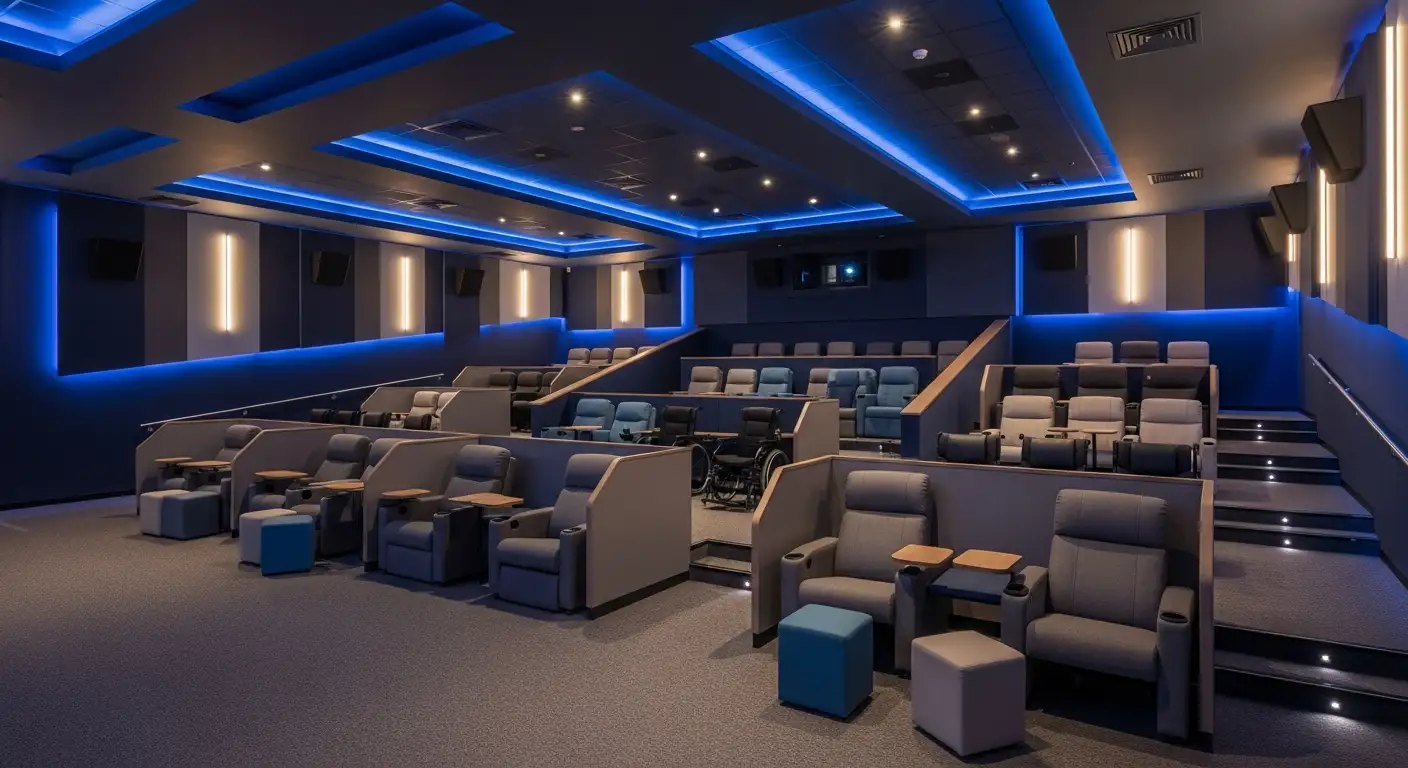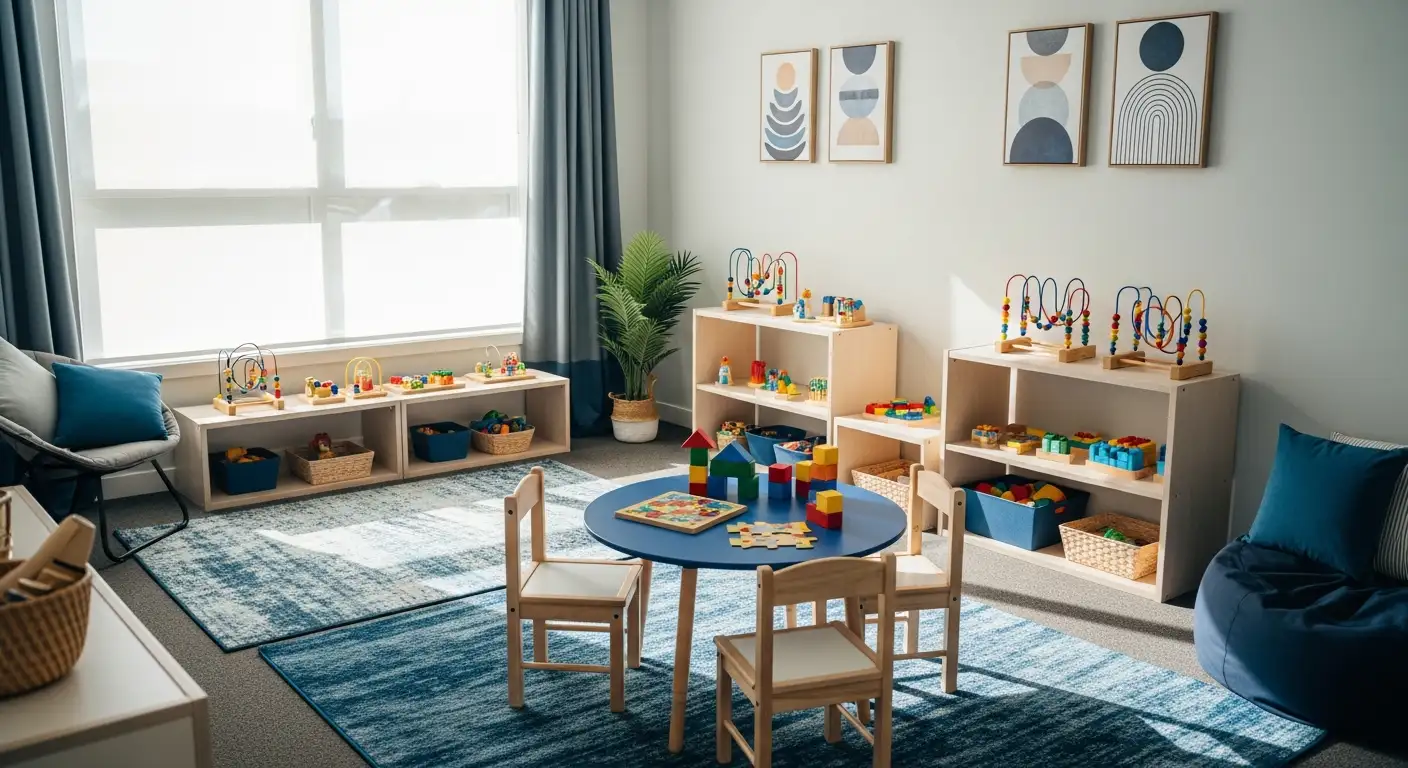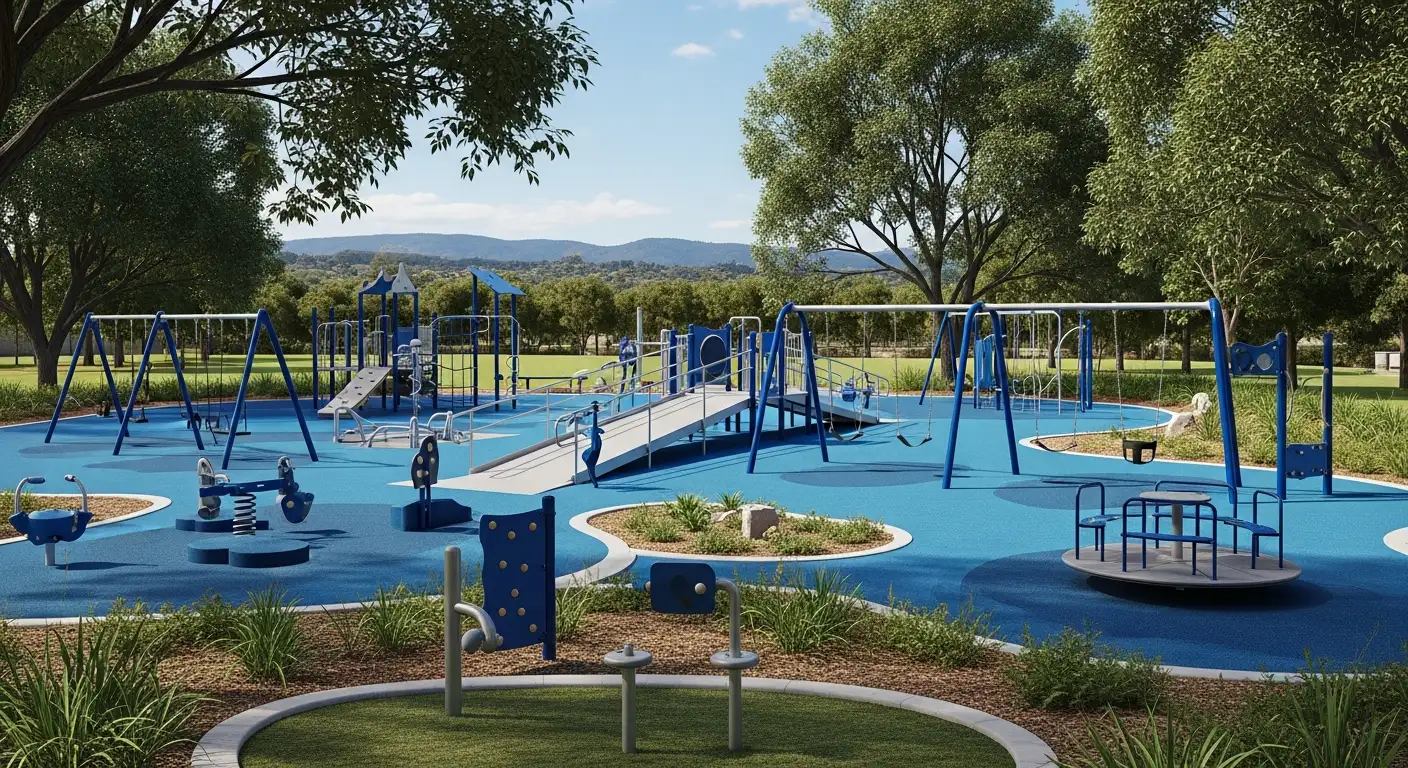The Impact of Autism on Social Anxiety
Unraveling the Complex Connection Between Autism and Social Anxiety

Understanding the Overlap of Autism and Social Anxiety
Social anxiety is notably prevalent among individuals with Autism Spectrum Disorder (ASD), affecting up to half of this population—significantly higher than rates in the general population. This article explores how autism impacts social anxiety, highlighting neurobiological, cognitive, and behavioral factors, while examining therapeutic approaches aimed at alleviating anxiety symptoms and enhancing social functioning in people with ASD.
Prevalence and Nature of Social Anxiety in ASD
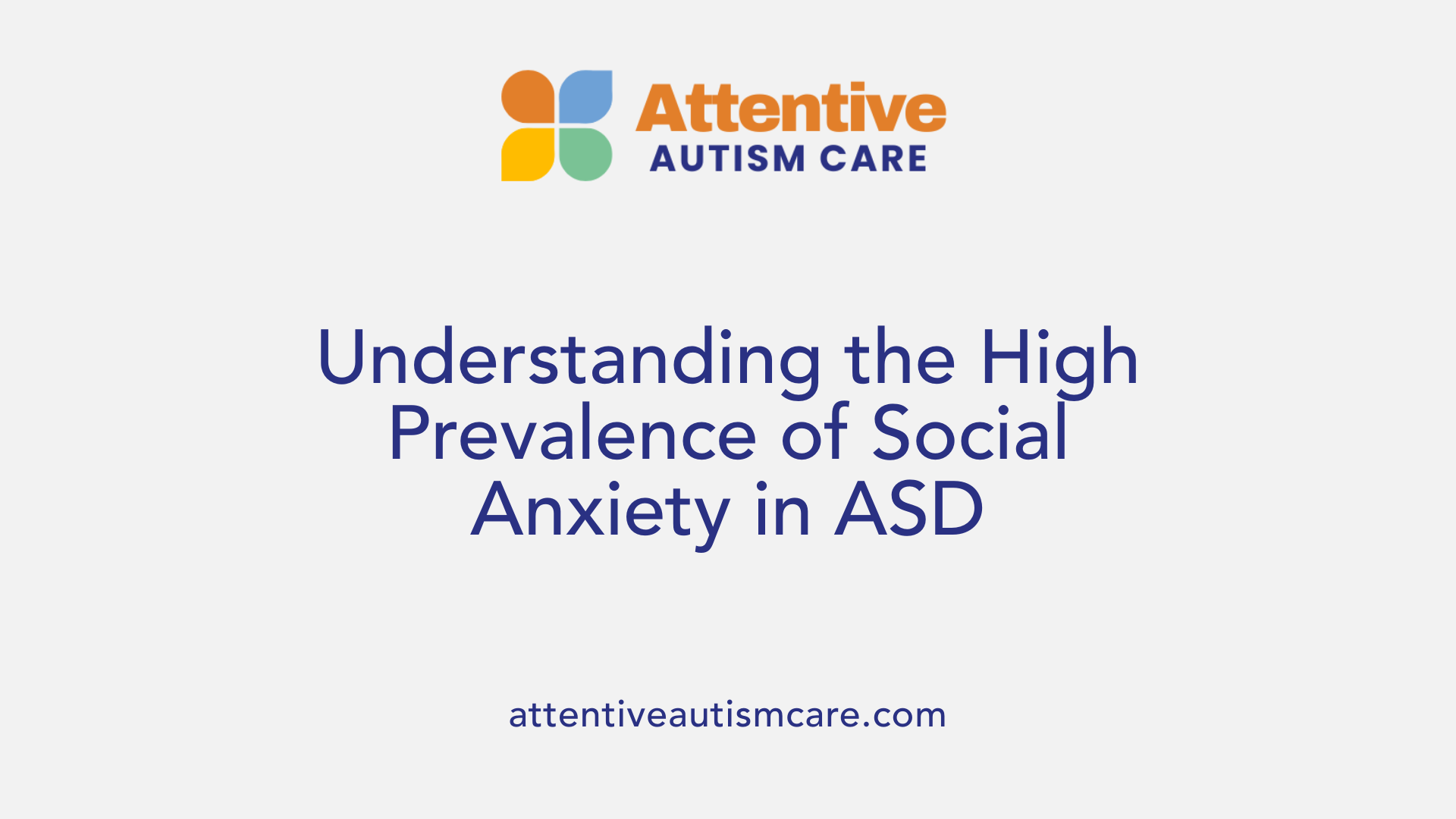
How common is social anxiety in individuals with ASD compared to those without?
Social anxiety affects up to 50% of individuals with autism spectrum disorder (ASD), markedly higher than the 7-13% prevalence seen in non-ASD populations. This illustrates that social anxiety is a frequent and significant concern within the ASD community.
What are common symptoms of social anxiety in people with ASD and how do they overlap with autism traits?
People with ASD often experience social anxiety due to difficulties with socio-communication, such as interpreting facial expressions, body language, maintaining eye contact, and reciprocal conversations. These impairments contribute to fears of social rejection and negative evaluation. Symptoms of social anxiety in ASD include fearfulness in social situations, restlessness, difficulty concentrating, and irritability—some of which also overlap with core autism traits like sensory sensitivities and task frustration. Cognitive factors including a preference for predictable environments and rigid thinking also exacerbate anxiety.
How do symptoms of social anxiety in ASD differ from those in non-ASD populations?
In ASD, social anxiety manifests alongside reduced social motivation and deficits in social reciprocity rather than solely being a fear of social judgment. Unlike non-ASD social anxiety, it often correlates with impaired emotional recognition, social competence, and is less associated with restricted repetitive behaviors or sensory sensitivities. Self-reports tend to show a positive correlation between social anxiety and autism symptom severity, although parent ratings do not consistently reflect this. These differences highlight the need for ASD-specific assessment and treatment approaches that focus on social communication and motivation challenges unique to this group.
Cognitive and Behavioral Contributors to Social Anxiety in Autism

How do socio-communication impairments impact social anxiety in ASD?
Individuals with Autism Spectrum Disorder (ASD) often experience social anxiety due to challenges in socio-communication. Difficulties in understanding and using social cues—such as facial expressions, body language, and maintaining eye contact—can make social interactions overwhelming. These impairments hinder reciprocal conversations and create uncertainty in social contexts, which can elevate feelings of anxiety.
Why do difficulties interpreting social cues contribute to social anxiety?
People with ASD commonly struggle to read nonverbal signals, including facial expressions and eye contact, which are crucial for smooth social engagement. This difficulty often leads to misunderstandings and increased fear of negative evaluation or social rejection. The struggle to decode these cues can make social settings unpredictable and stressful, contributing significantly to social anxiety.
What cognitive factors exacerbate social anxiety in individuals with ASD?
Cognitive patterns such as intolerance of uncertainty—the discomfort with unpredictable or novel situations—and rigid thinking styles intensify social anxiety in autistic individuals. A preference for routine and predictability means that unexpected social demands or ambiguous social information can trigger heightened anxiety. These cognitive tendencies intersect with socio-communication challenges, forming a cycle that sustains and worsens social anxiety symptoms.
Collectively, socio-communication impairments, misinterpretation of social cues, and cognitive inflexibility create a complex landscape that significantly contributes to the high rates of social anxiety observed in people with ASD. Addressing these areas through targeted interventions may help reduce social anxiety and improve social functioning.
Neurobiological Basis Underpinning Social Anxiety in ASD
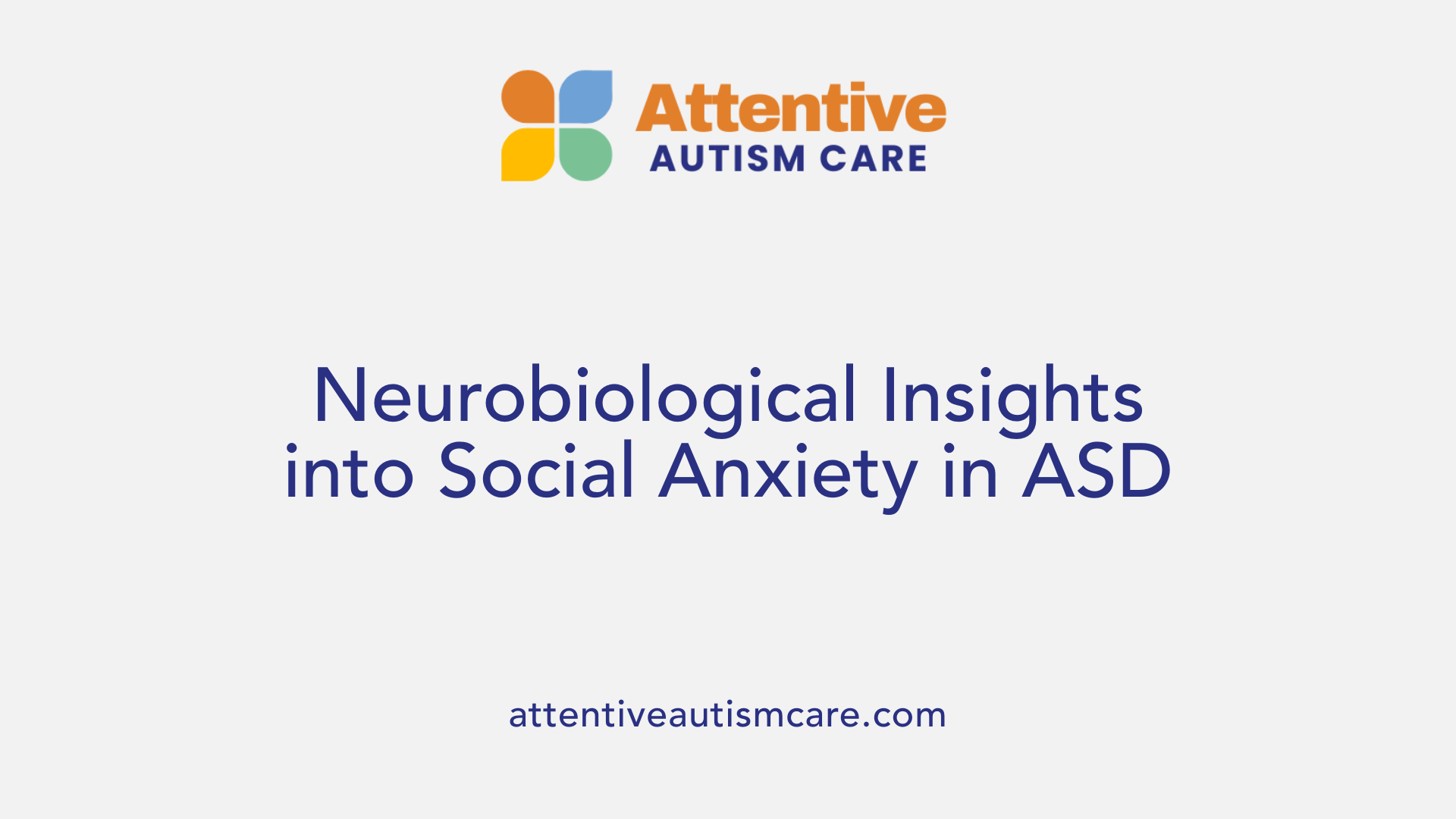
Brain regions implicated in social anxiety among autistic individuals such as the medial prefrontal cortex and amygdala
Neurobiological research reveals that certain brain regions play a crucial role in social anxiety experienced by individuals with autism spectrum disorder (ASD). The medial prefrontal cortex (mPFC) often shows dysfunction, which contributes to difficulties in processing social cues and engaging in social interactions. In addition, hyperactivity of the amygdala is commonly observed. The amygdala is heavily involved in recognizing and responding to fear and threat, and its overactivity can heighten fear responses during social encounters, leading to increased social anxiety.
Role of emotional regulation and social information processing deficits
Emotional regulation (ER) impairments heighten vulnerability to social anxiety among autistic individuals. Difficulties in managing emotions can exacerbate anxious responses in social contexts. Alongside this, deficits in social information processing—such as challenges in interpreting facial expressions, tone of voice, and body language—further impede social interaction. Together these neurobiological and cognitive challenges form a foundation for the elevated social anxiety frequently seen in ASD. Addressing these brain-based and regulatory deficits through targeted interventions may help reduce social anxiety and improve overall social functioning.
Impact of Social Skills and Motivation on Anxiety Levels

How does social competence relate to social anxiety in individuals with ASD?
Individuals with autism spectrum disorder (ASD) often face significant challenges in social competence, including interpreting social cues and engaging in reciprocal communication. These difficulties strongly contribute to elevated rates of social anxiety, which can affect up to 50% of those with ASD, compared to a much lower prevalence in the general population. Poor social skills not only hinder successful interactions but also increase fear of negative evaluation and social rejection, thus fueling anxiety.
In what ways do deficits in social motivation worsen social anxiety?
Research indicates that deficits in social motivation—such as diminished desire to engage socially or seek peer connections—are especially linked with heightened social anxiety in ASD populations. Reduced social motivation makes it harder for individuals to initiate or maintain social relationships, leading to increased feelings of loneliness and isolation. This cyclical pattern exacerbates anxiety symptoms, as less motivated individuals experience fewer positive social experiences and thus greater apprehension in social contexts.
What role does sensitivity to social rejection and impaired emotional recognition play?
High sensitivity to social rejection is a significant risk factor that amplifies social anxiety among those with ASD. Emotional recognition impairments, including difficulty identifying and interpreting facial expressions or body language, limit a person's ability to respond appropriately in social settings. This heightened vulnerability to perceived negative judgments and inability to read social signals accurately can increase fear and avoidance, reinforcing anxious feelings.
Together, these factors illustrate how intertwined social skill deficits, motivation challenges, and emotional processing difficulties contribute to the pronounced social anxiety seen in autism. Addressing these areas in tailored interventions may help reduce anxiety by enhancing social engagement and competence.
Assessment Challenges and Symptom Overlap in ASD and Social Anxiety
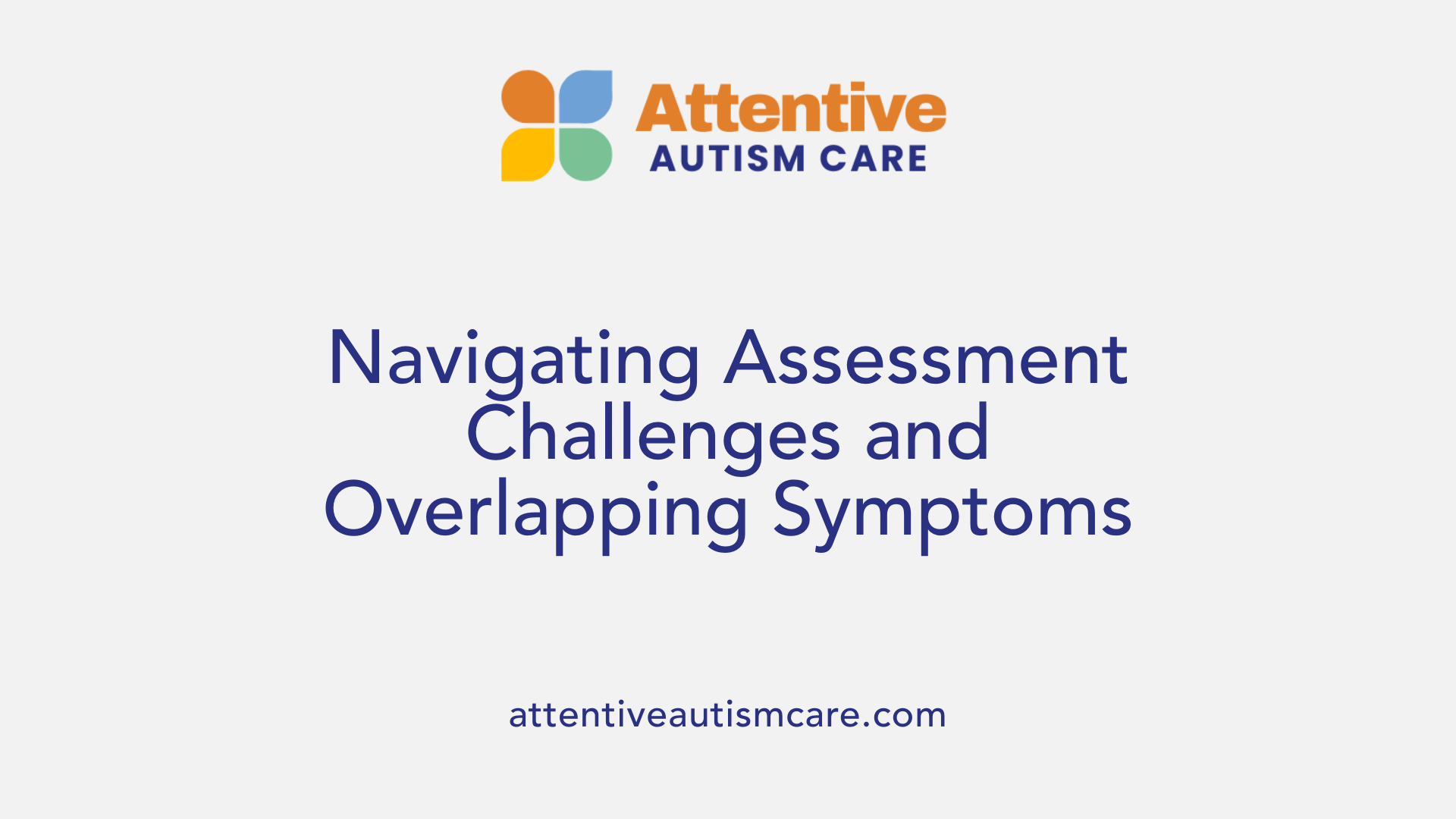
Difficulties in Diagnosing Social Anxiety in ASD Due to Overlapping Symptoms
Diagnosing social anxiety in individuals with autism spectrum disorder (ASD) presents significant challenges primarily because many symptoms overlap with core features of ASD. For example, social communication impairments, reduced social motivation, and difficulties with social reciprocity are common in both conditions. This overlap can mask or mimic social anxiety symptoms, complicating accurate diagnosis and leading to potential misclassification.
Limitations of Self-Report Measures and Need for Multimodal Assessments
Many assessment tools for social anxiety rely on self-report measures, which may be less reliable in people with ASD due to communication difficulties and differences in emotional insight. Parent reports often do not correlate strongly with self-rated social anxiety symptoms, reinforcing the necessity for a multimodal approach. Combining behavioral observations, clinical interviews, informant ratings, and standardized social responsiveness scales is crucial for a more accurate evaluation.
Importance of Distinguishing Social Anxiety from Core Autism Symptoms
Recognizing social anxiety as a distinct and treatable condition separate from core ASD features is essential for guiding effective interventions. Differentiating between social anxiety and autism-related social difficulties enables clinicians to tailor therapies, such as modified cognitive-behavioral therapy and social skills training, specifically addressing the anxiety symptoms. This precision supports improved social functioning and quality of life for autistic individuals.
Behavioral and Cognitive Interventions: Tailoring Therapy for ASD
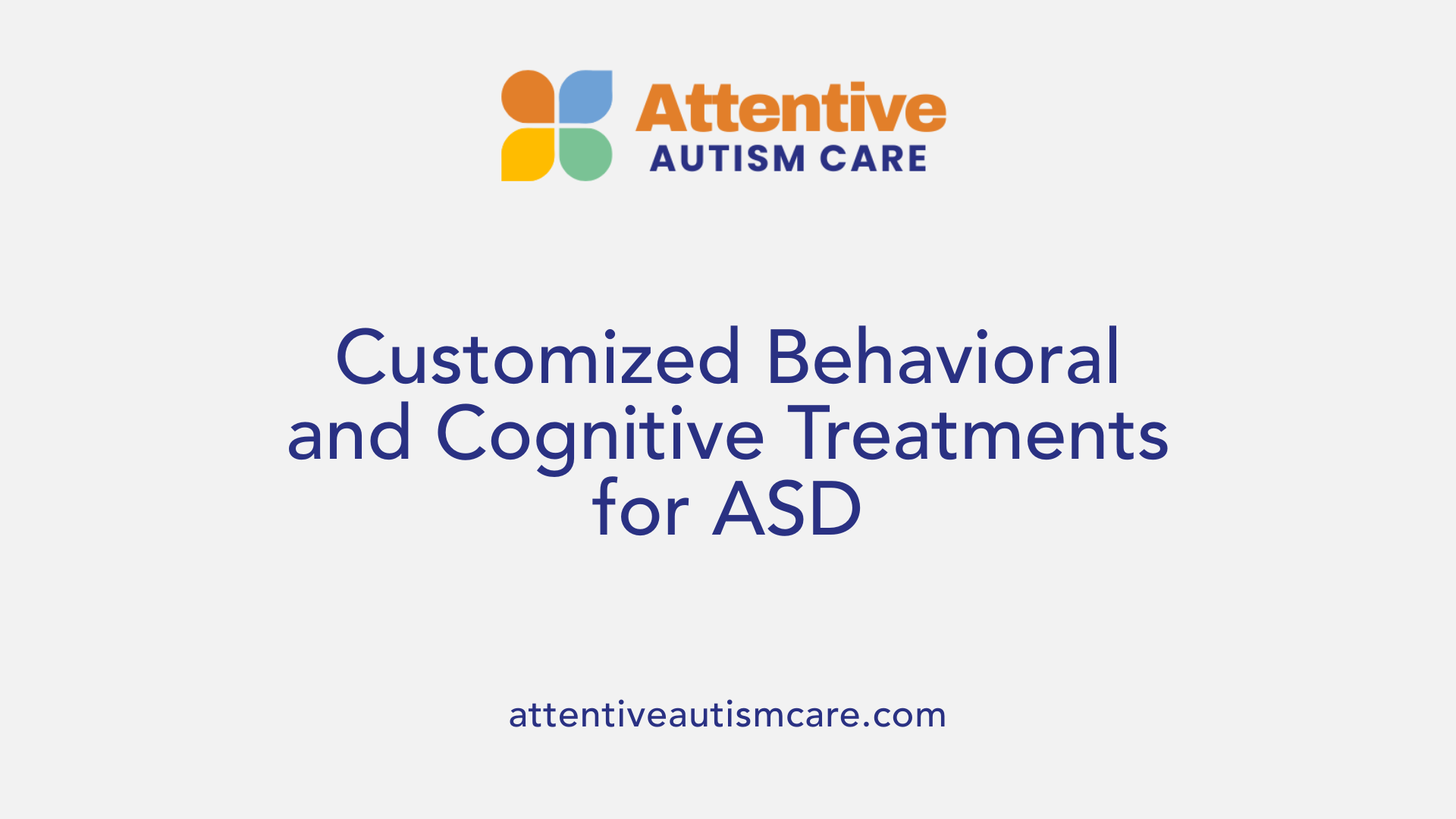
How effective is cognitive-behavioral therapy (CBT) for social anxiety in individuals with ASD?
CBT has demonstrated significant promise in reducing social anxiety symptoms among youth and adults with autism spectrum disorder. Studies involving randomized controlled trials reveal that CBT reduces the frequency, intensity, avoidance behaviors, and interference related to anxiety in daily life for autistic individuals. Improvements often extend beyond anxiety symptoms to enhance social functioning and mood, with effects sustained at follow-ups. However, CBT may be less effective in addressing physical symptoms of anxiety in this group, and autism-related traits often influence treatment outcomes, with more pronounced traits linked to less improvement.
What role does social skills training play within CBT programs?
Integrating social skills training into CBT is crucial for addressing the unique social challenges faced by individuals with ASD. Programs like PEERS® incorporate didactic lessons, role-play, behavioral rehearsals, and homework to improve social communication and reduce social anxiety. This combined approach not only teaches social interaction skills but also provides repeated social exposures, which helps decrease fear and avoidance. Participants with higher baseline social anxiety tend to show greater improvements, indicating that enhanced social competence directly contributes to reducing anxiety symptoms.
What adaptations are needed to tailor CBT and social skills interventions specifically for ASD?
Standard CBT requires adjustments to maximize effectiveness for autistic individuals. Simplified cognitive work that respects the processing differences in autism and structured social skills frameworks are important. Additionally, involving caregivers or social coaches can reinforce learning and help generalize skills across settings. Interventions often include a focus on tolerating uncertainty and managing repetitive behaviors that may worsen anxiety. Customizing therapy content and delivery to match the developmental and cognitive profiles of participants supports better engagement and outcomes.
These behavioral and cognitive interventions represent a growing evidence base supporting tailored therapeutic approaches that address both social anxiety and social functioning difficulties in ASD populations.
The PEERS® Program and Social Skills Intervention Outcomes
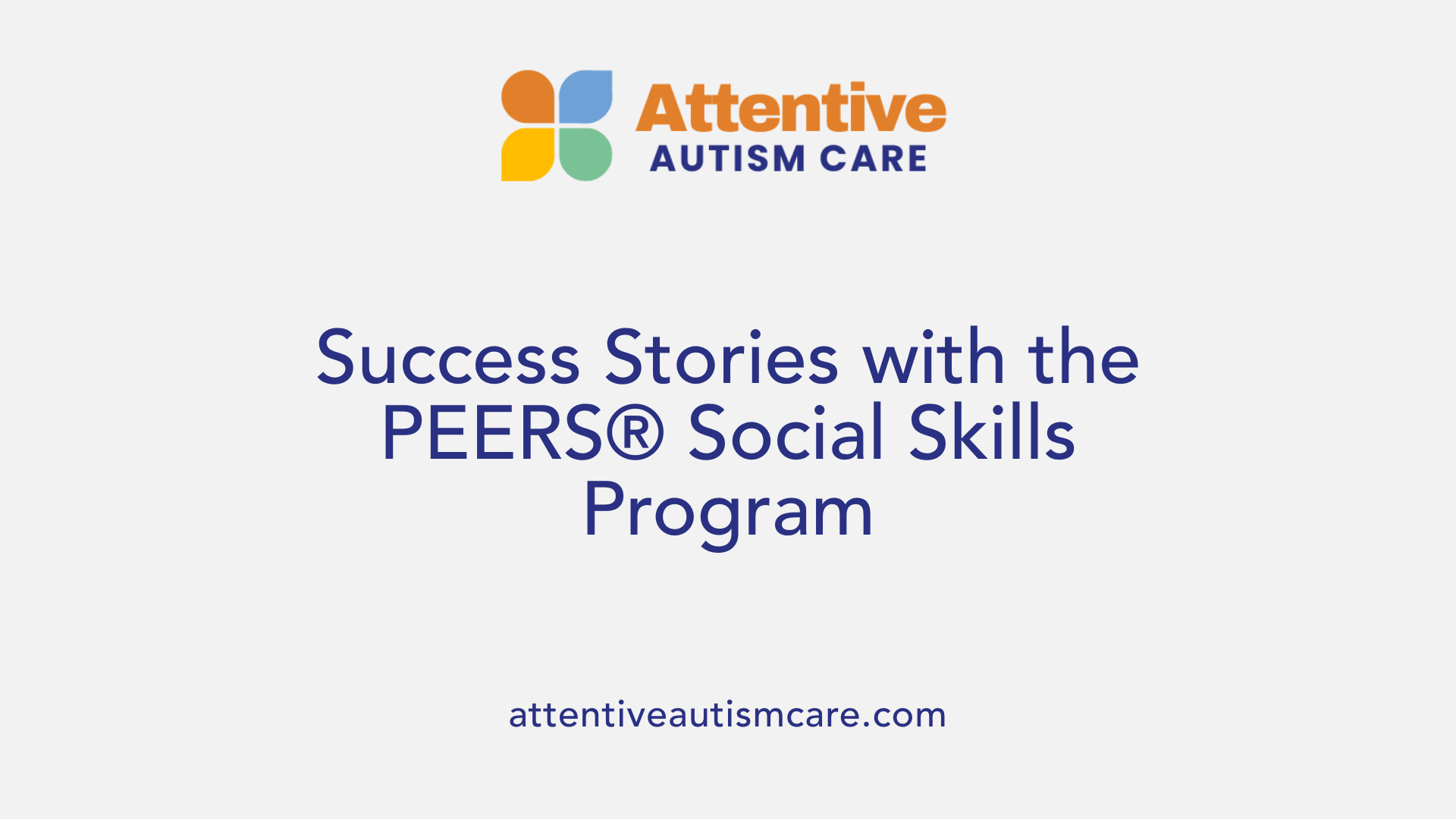
What is the structure and what components does the PEERS® intervention include?
The PEERS® program is an evidence-based social skills intervention specifically designed for autistic adolescents and young adults. It utilizes cognitive behavioral therapy (CBT) methods, incorporating didactic lessons, role-play scenarios, behavioral rehearsals, and homework assignments. The approach emphasizes practical social communication skills, including conversational abilities and peer interaction strategies.
Caregivers or social coaches actively participate in the program, supporting the reinforcement and generalization of learned social skills in everyday environments. This involvement helps ensure that participants apply skills beyond the therapy sessions, enhancing real-world social engagement.
What evidence supports PEERS® improving social skills and reducing social anxiety?
Multiple randomized controlled trials have demonstrated the PEERS® program's effectiveness. Participants showed notable improvements in social responsiveness and communication skills after completing the intervention. Critically, these social gains correlated with significant reductions in social anxiety symptoms, particularly in those who started with higher baseline anxiety levels.
The behavioral rehearsals integrated into the program serve as a form of social exposure, enabling participants to practice and build confidence in social interactions gradually. This structured exposure likely contributes to the decrease in fears and anxieties related to social engagement.
How do caregiver involvement and behavioral rehearsals contribute to the program's success?
Caregiver involvement enhances skill generalization by providing ongoing encouragement and feedback outside clinical sessions. Caregivers also help to create supportive social environments, which is crucial for reinforcing positive social experiences.
Behavioral rehearsals within PEERS® simulate real-life social situations, allowing participants to actively practice social behaviors in a controlled, supportive setting. This repeated practice helps reduce avoidance and anxiety in actual social contexts, providing a foundation for improved social functioning.
Through this combination of structured teaching, practice, and caregiver support, PEERS® effectively strengthens social skills and alleviates social anxiety in autistic youth.
Long-Term Benefits and Challenges in Anxiety Management for Autism
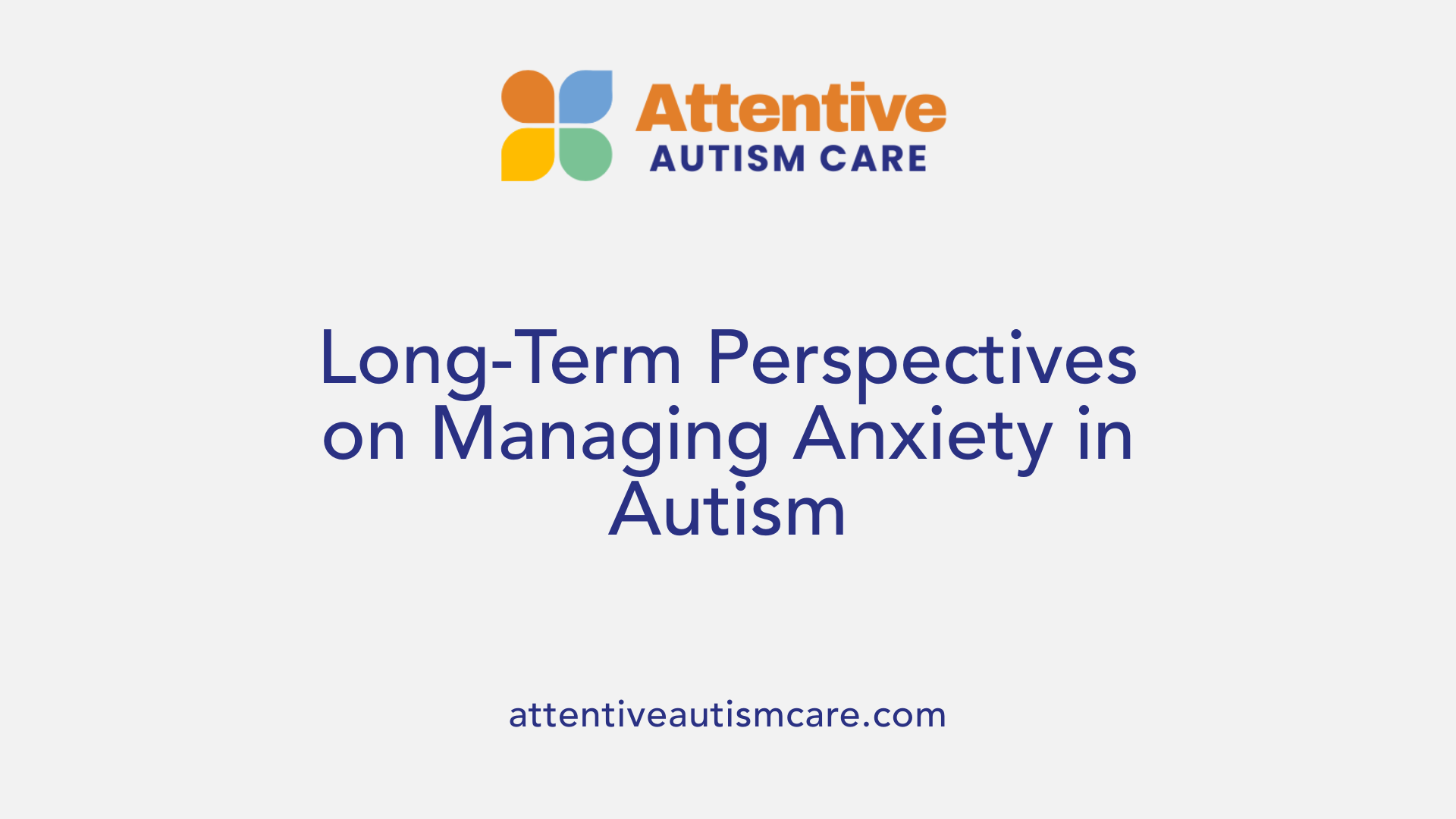
Sustained Improvements in Social Functioning Post-Intervention
Behavioral interventions like Cognitive Behavioral Therapy (CBT), especially those targeting social skills in individuals with Autism Spectrum Disorder (ASD), demonstrate lasting positive effects on social functioning. Studies have shown that social impairments improve not only during CBT treatment but continue to improve through follow-up periods extending up to three months post-therapy. For example, adolescents with ASD undergoing CBT showed steeper improvements in social skills when starting with higher social anxiety levels.
Relationship Between Reductions in Social Anxiety and Enhanced Social Skills
The data reveal a clear association between reductions in social anxiety symptoms and improvements in social responsiveness among autistic youths. Programs such as PEERS®, which integrate social skills training with behavioral rehearsals and social exposure tasks, have illustrated that improvements in social communication coincide with decreased social anxiety. Greater baseline social anxiety often predicts more noticeable improvements post-intervention, suggesting that addressing anxiety directly can facilitate better social engagement and motivation.
Challenges in Managing Physical Symptoms of Anxiety and Family Interference
Despite these gains in social skills and anxiety symptom frequency, CBT tends to be less effective at reducing physical symptoms of anxiety—such as increased heart rate, muscle tension, and restlessness—in autistic youth. Additionally, individuals with more pronounced autism traits may experience persistent challenges related to family interference and social avoidance, even after therapy. Compared with anxious youths without autism, those with ASD often show poorer outcomes in these areas, highlighting the need for tailored approaches that specifically target both emotional and physical components of anxiety and the family environment.
Future Directions in Research and Clinical Practice

Need for Further Exploration of Causal and Protective Mechanisms of Social Anxiety in ASD
While numerous studies have investigated the relationship between autism spectrum disorder (ASD) and social anxiety (SA), further research is necessary to uncover the causal and protective factors that influence the development and maintenance of social anxiety in this population. Understanding these mechanisms will be crucial to developing targeted interventions that effectively address the unique challenges faced by individuals with ASD. Current evidence suggests a complex interplay between social motivation deficits, emotional regulation difficulties, and repetitive behaviors, but more nuanced exploration is required to design precise therapeutic strategies.
Importance of Early Assessment and Intervention Targeted at Social Motivation Deficits
The high prevalence of social anxiety among children and adolescents with ASD highlights the critical need for early identification and intervention. Social anxiety in ASD is closely linked to impairments in social communication and motivation, suggesting that early assessment focused on these domains could facilitate prompt support. Tailored interventions that specifically address social motivation deficits hold promise for reducing social anxiety symptoms and improving social reciprocity. Early behavioral therapies and social skills training, adapted to the developmental level and communication abilities of individuals, are essential to promote better social functioning and long-term well-being.
Integration of Behavioral Analysis in Therapies to Improve Outcomes
Behavioral analysis techniques have demonstrated efficacy in enhancing social skills and reducing social anxiety symptoms in autistic individuals. Interventions like the PEERS® program incorporate cognitive-behavioral therapy (CBT), social skills training, behavioral rehearsals, and caregiver involvement, facilitating generalization of skills beyond the clinical setting. Combining behavioral analysis with tailored cognitive strategies offers a promising approach to address both the social and emotional challenges experienced by individuals with ASD. Further integration and development of these methods in clinical practice could improve treatment adherence, effectiveness, and sustainability of outcomes.
These future directions underscore the importance of a multifaceted and individualized approach in research and clinical practice, emphasizing the potential for improved social functioning through a better understanding of social anxiety within the context of autism.
Bridging the Gap Between Autism and Social Anxiety Treatment
Understanding how autism influences social anxiety reveals a complex interplay of neurological, cognitive, and behavioral factors, necessitating tailored therapeutic approaches. Behavioral interventions, especially those incorporating cognitive-behavioral therapy and social skills training like the PEERS® program, have demonstrated strong potential in reducing social anxiety and improving social functioning in individuals with ASD. Continued research and refinement of assessment tools and intervention strategies will enhance clinical outcomes and support the social and emotional wellbeing of those living with autism.
References
- Correlations Between the Development of Social Anxiety ...
- Social anxiety in autism spectrum disorder: A systematic ...
- Long-Term Effects of CBT on Social Impairment in ...
- Effects of cognitive-behavioral therapy on core aspects ...
- Improving Social Anxiety and Social Responsiveness in ...
- Improving Social Anxiety and Social Responsiveness in ...
- Autism and Anxiety
- Modified CBT for social anxiety and social functioning in ...
- Social Anxiety in Children and Adolescents With Autism ...








